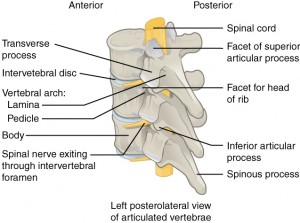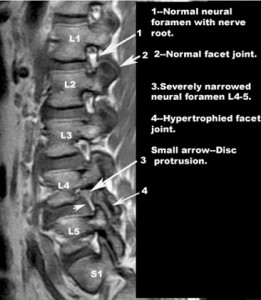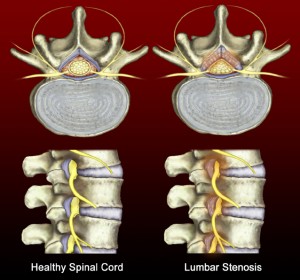 Spinal stenosis refers to a degeneration of the spinal column bones that can, and often does, impact the ability of the nerves to pass through and flow out of the spine on their way to energize the body.
Spinal stenosis refers to a degeneration of the spinal column bones that can, and often does, impact the ability of the nerves to pass through and flow out of the spine on their way to energize the body.
Human beings are born to break down. From the minute we are born, we dry up and eventually fall apart.
There is no reason to hope that this won’t happen to you. It is the nature of our being. That said, we have a lot of opportunities to control how we fall apart.
My interest in posture and movement patterns concerns developing a body that withstands the slings and arrows of time to some adequate degree.
We are all destined to break down, but how and when are somewhat within our power.
The human spine is made up of hard bones and soft discs. When it comes to the hard bits we have thirty-three vertebrae (bone) separated into four sections.
The bones in the top three sections—lumbar, thoracic, and cervical— are all moveable while the bottom sections—the sacrum and coccyx—fuse early in life though there is a joint separating the two.
Between each vertebra of the top three sections, there are cushiony pillows—intervertebral discs—that allow for movement of the vertebra and absorb the shock of those movements.
The intervertebral discs also act to hold the spine together.
The spinal cord passes through the spinal column, a hole in the center of the spine.
On either side of the spinal column are smaller holes (intervertebral foramina) that nerves pass through on their journey to the trunk and extremities. Spinal stenosis is the narrowing or collapsing of the central canal or the small holes that offer transit for the nerves.
Either of these environments can lead to pressure on the spinal cord or the nerves that pass through those small holes.
This pressure can lead to pain due to nerve compression in a wide range of places in the body.
The pain can be local and felt where the spinal stenosis occurs –most often in the lower back or neck—or it can be referred to the places where the nerves travel.
Spinal stenosis is most commonly attributed to aging and/or genetics.
Arthritis and other conditions are sometimes cited as well but you rarely read or hear about the influence that posture and body mechanics can have on the long term function of the spine.
Needless to say I am all about posture and body mechanics to support spinal stenosis that is already occurring or as preventative measure thinking towards the future.
The spine is a vertical column with four curves. The curves are necessary for us to stand and walk upright.
The curves need to be well aligned and the muscles that surround them need to have balanced tone to support the successful upright position of the spine.
This is no easy task by a long shot. Gravity, sedentarism, poor ergonomics and more conspire to mess with posture and an effective alignment of the spine.
It takes conscious work and the willingness, if not desire, to change.
But as I have written ad nauseum in these posts, the payoff is worth the effort. Improve your posture and relearn how to walk and your spine might be less likely to fall apart before its time.
***



